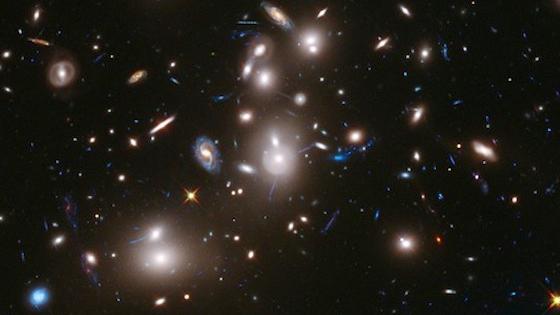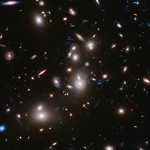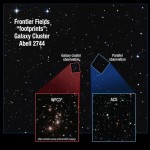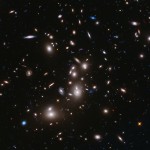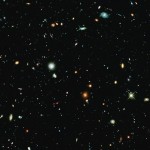Behold! This is the deepest into space we’ve looked!
I’m kind of skeptical that this is actually the furthest we’ve seen into space. You know? I ain’t taking anything away from you, Hubble. You’re wonderful. I just suspect that such a news story is laden with unspoken caveats up the ass. But whatever. Let’s just appreciate the beauty together. Hold my hand. Hold it!
Using a naturally-existing zoom lens in space, the Hubble telescope has taken the deepest look into a cluster of galaxies ever taken in space to grab these pictures of galaxy cluster Abell 2744.
NASA used the power of the Hubble, a long exposure, and what they call a naturally-existing “gravitational lens” formed when the gravities of the individual galaxies clustered together combine to become so powerful that they actually warp the surrounding space. This bending of space and light creates a natural “zoom lens” that magnifies some of the way, way back galaxies that would otherwise be far beyond our sight, allowing astronomers to view almost 3,000 distinct galaxies, including some of the youngest galaxies that NASA has ever discovered. NASA plans to combine the footage with shots of Abell 2744 taken by the Chandra X-ray Observatory and the Spitzer Space Telescope to shed some light on both how galaxies evolve and just what role black holes play in the process.
These comparative shots of the regular view of Abel 2744 and the magnified views give a great sense of just how powerful a magnification the natural lens combined with the Hubble offers:
[io9]




